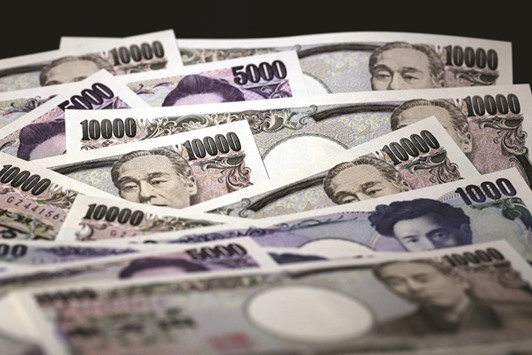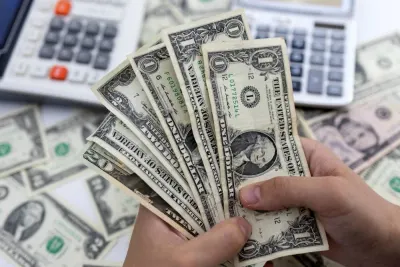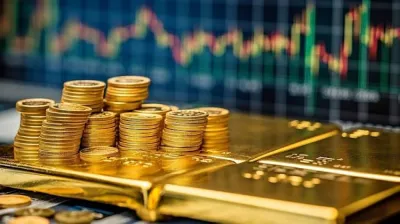If there’s one thing yen bulls and bears can agree on, it’s that the threshold for currency intervention is drawing nearer - and may be as close as 105 per dollar.
Both Bank of America Merrill Lynch strategist Shusuke Yamada, who predicts the yen could climb another 8% this year, and Nomura Securities Co’s Yunosuke Ikeda, who sees an 11% decline, say 105 is the level where Japanese policy makers would consider stepping in to sell.
The yen advanced to 107.67 last week, the strongest since before the central bank expanded monetary stimulus in October 2014, despite efforts by officials to talk it down. It rounded off the week by falling on Friday versus all of its major peers.
While analyst opinions differ on how successful intervention would be, what’s clear is that officials’ jawboning failed to slow the yen’s advance.
Its 11% jump since the end of January is the biggest among major currencies and undermines Prime Minister Shinzo Abe’s efforts to stoke inflation.
It also puts his pledge this week to avoid “arbitrary” intervention to the test less than two months before he hosts the leaders of the Group-of-Seven countries.
“At 105, there’s a realistic probability of intervention,” Yamada said. The odds of the authorities acting would climb above 50% if the currency strengthened to 100 per dollar, he said.
Officials have made no secret of their concern over the yen’s strength this week. Finance Minister Taro Aso said on Friday that rapid fluctuations, whether strengthening or weakening, are undesirable. Recent movements have been one-sided and action will be taken as needed, he said.
Chief Cabinet Secretary Yoshihide Suga weighed in for a fourth day on Friday and with Bank of Japan Governor Haruhiko Kuroda has been among those saying they’re watching currency markets. The yen dropped 0.7% to 108.93 per dollar on Friday, headed for its biggest decline since the start of March.
The last time Japan sold the yen to restrain gains was in 2011, in a multilateral intervention following an earthquake and tsunami that devastated the country’s coastline. Abe’s commitment on the currency this week echoed the communique of the G-20 meeting in February, where finance chiefs promised to consult closely on foreign exchange and refrain from competitive devaluations.
“As long as Japan belongs to G-7, any intervention will require approval from the US,” Ikeda, the head of Japan foreign-exchange research at Nomura Securities, said at a media event Thursday. Until 105, that would be “unjustifiable,” even though the speed of the yen’s advance suggests it’s driven by speculators, he said.
Julius Baer Group, the top forecaster of the yen for the past two quarters, is likely to revise its prediction to 105 or stronger, from its current projection of 108 in three months, if stocks fall further, said David Kohl, head of foreign- exchange research in Frankfurt. An advance to 105 or 100 may prompt authorities to step in, he said.
The yen has been supported by demand from investors seeking havens from sliding stock prices and as Japanese exporters bring home earnings at the start of the new financial year. Risk- reversal prices derived from options suggest the yen will climb the most versus the dollar among 31 major currencies in the next six months.
Not everyone sees 105 as a level that would spur government intervention.
Eisuke Sakakibara, the top currency official at Japan’s Finance Ministry in the late 1990s, who earned the nickname Mr Yen for his ability to influence the exchange rate, says it would require an advance beyond 100. Tohru Sasaki, a former central bank official who’s now head of Japan markets research at JPMorgan Chase & Co, says it would take a rally to 95 - and that any intervention in the current environment would be futile.
Foreign-exchange traders are likely to keep putting pressure on the yen while staying on high alert for signs of government action, according to Yousuke Hosokawa, head of foreign-exchange sales at Sumitomo Mitsui Trust Bank in Tokyo.
“It’s like they’re testing the resolve of authorities to act,” he said.

Japanese yen banknotes of various denominations are arranged for a photograph in Tokyo. The yen advanced to 107.67 last week, the strongest since before the central bank expanded monetary stimulus in October 2014, despite efforts by officials to talk it down.


